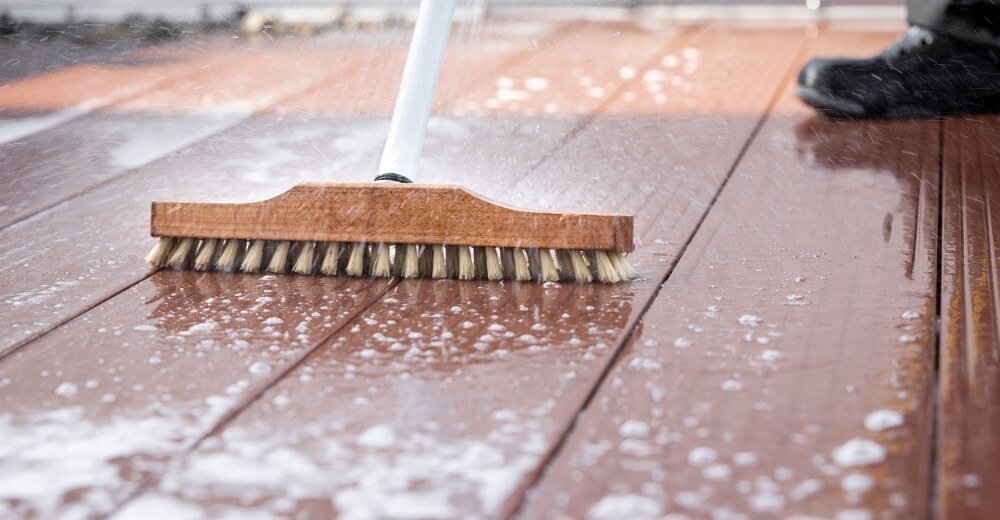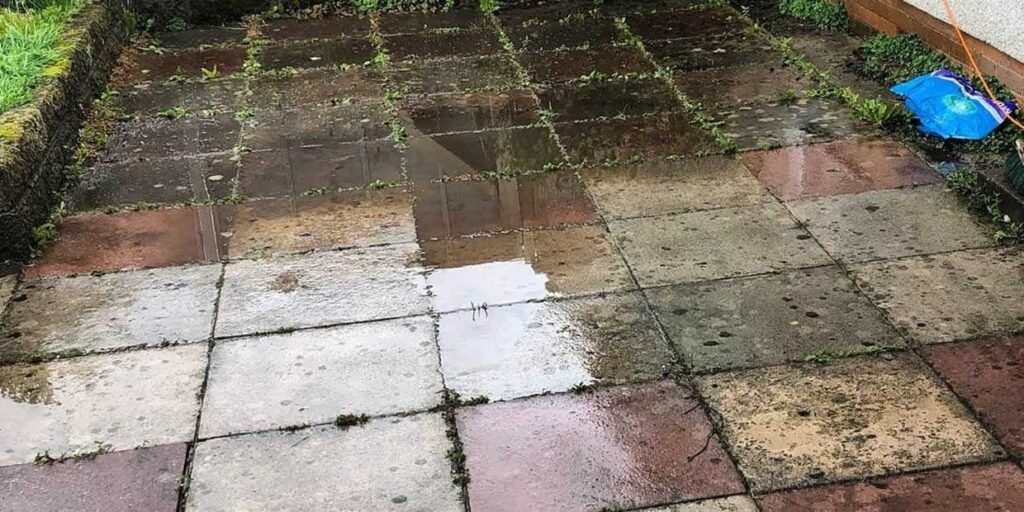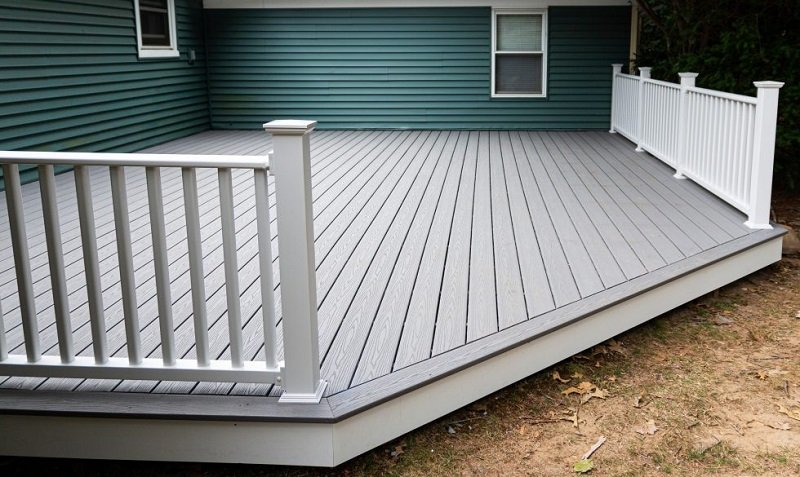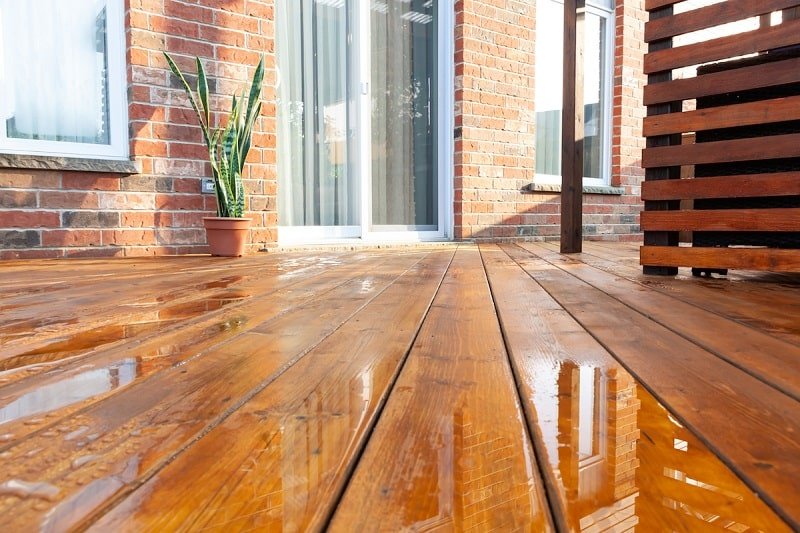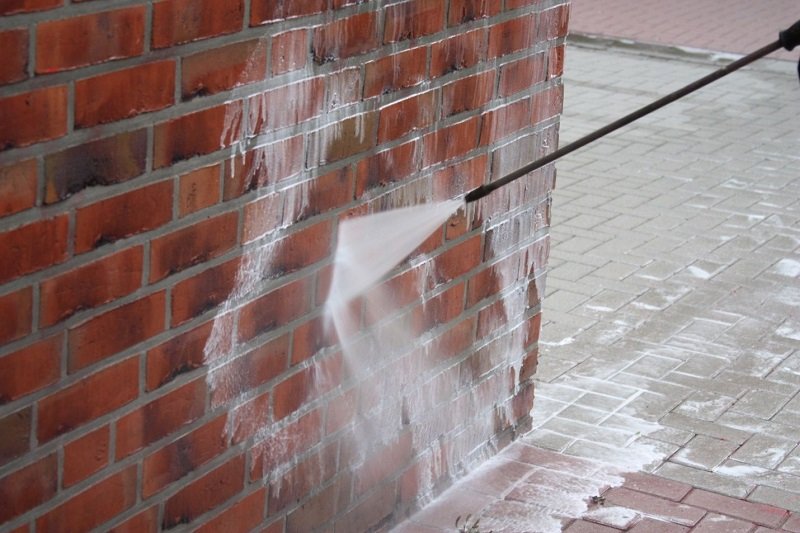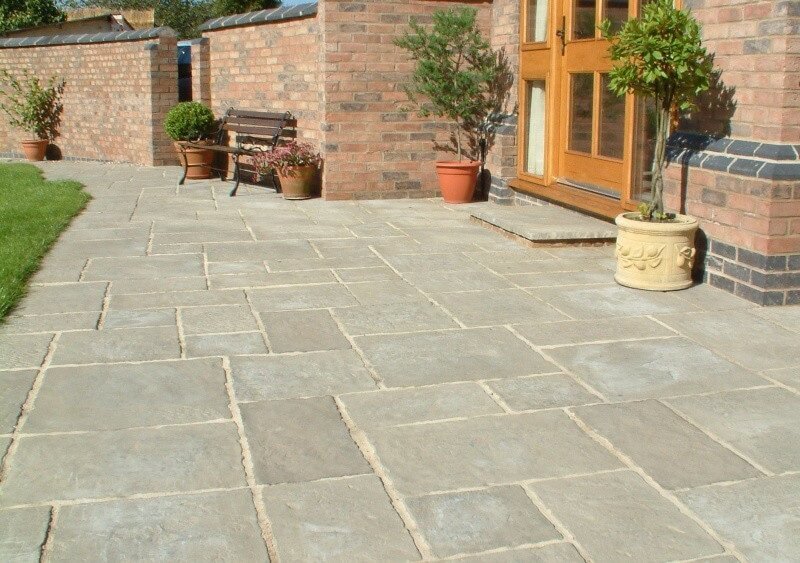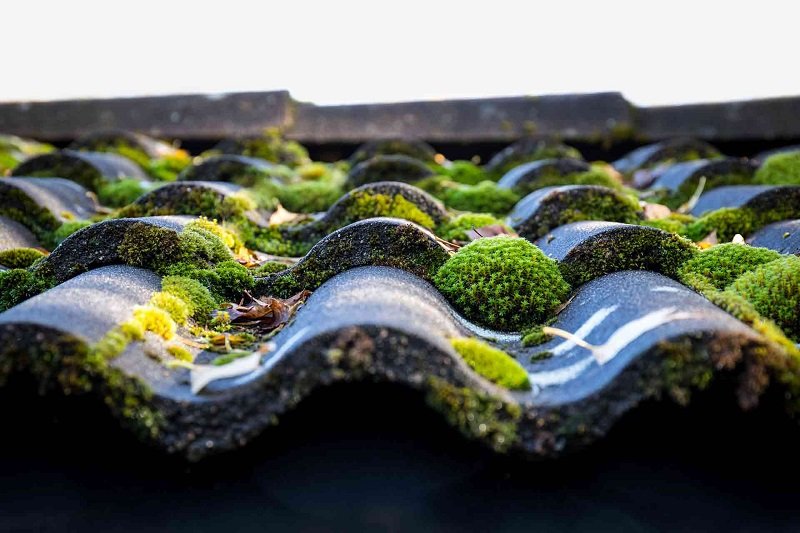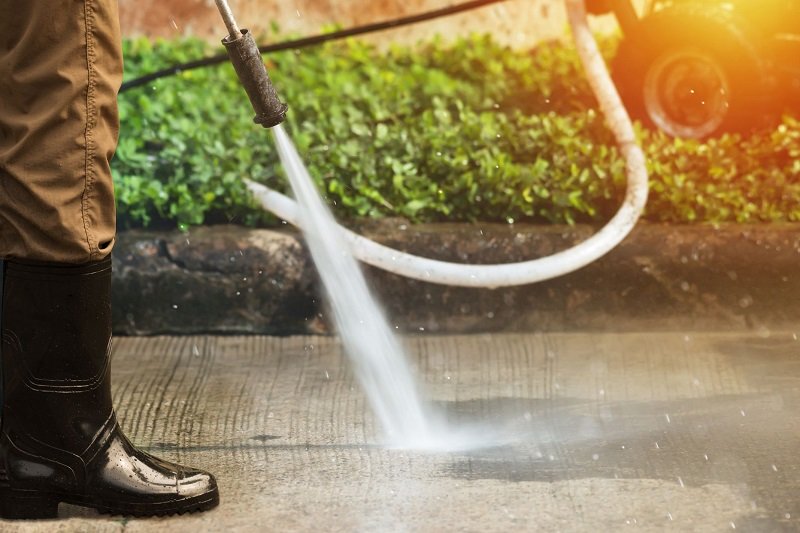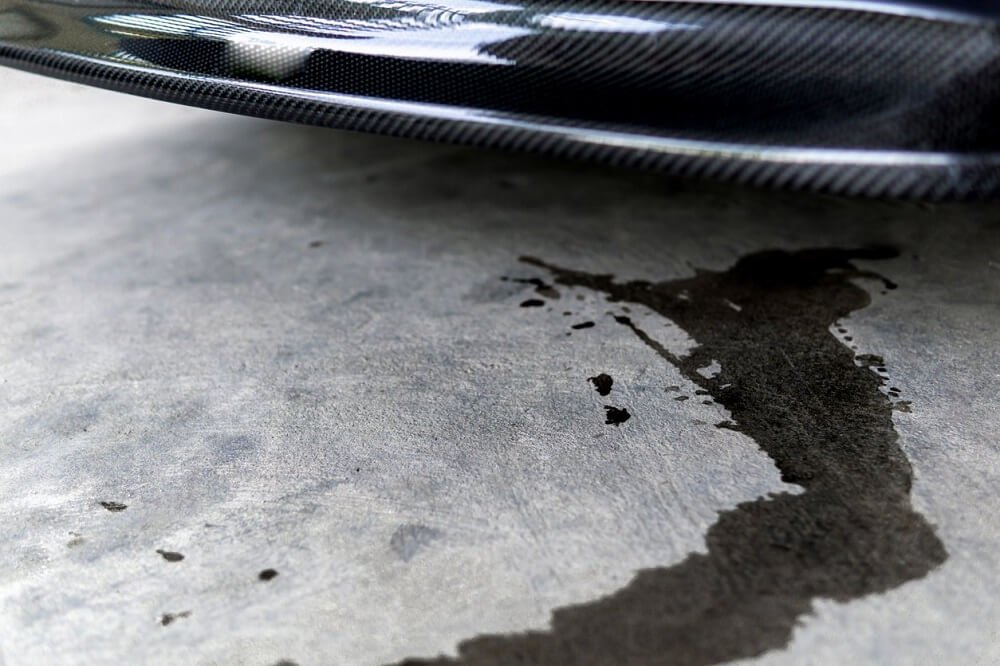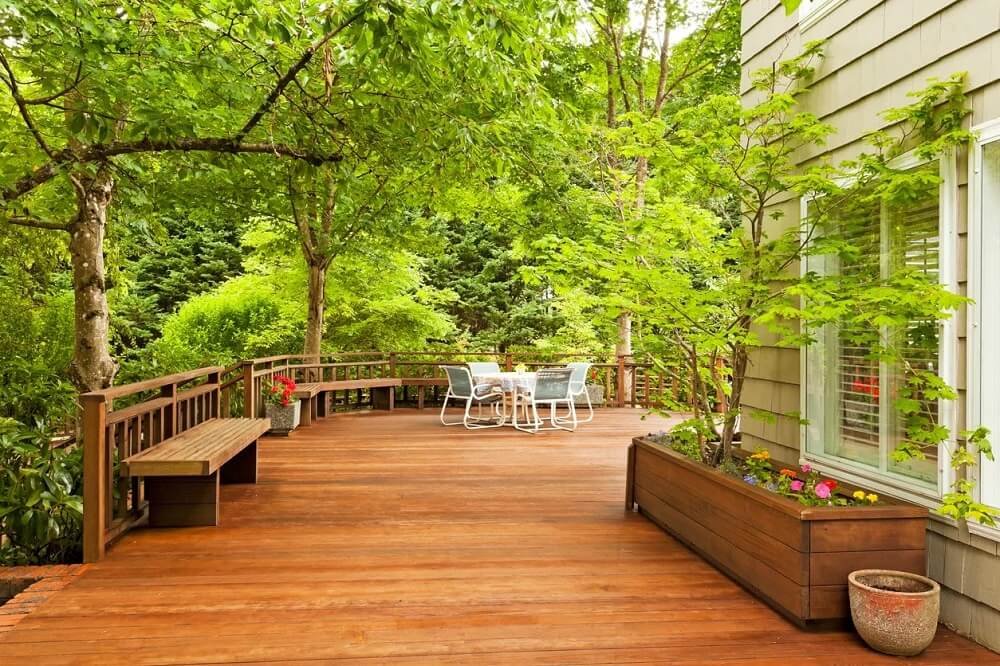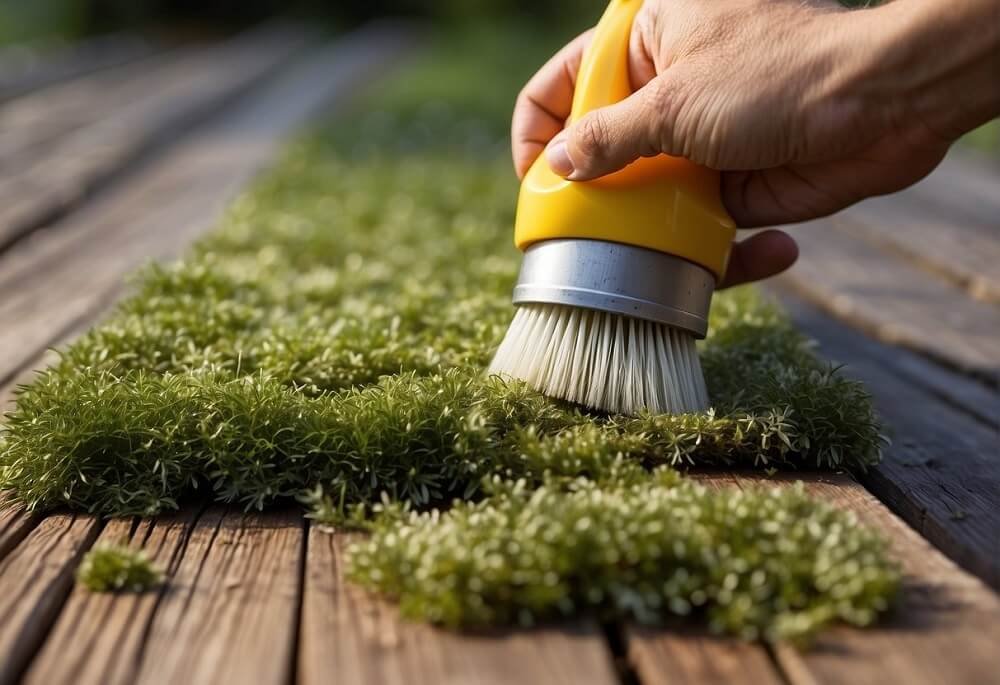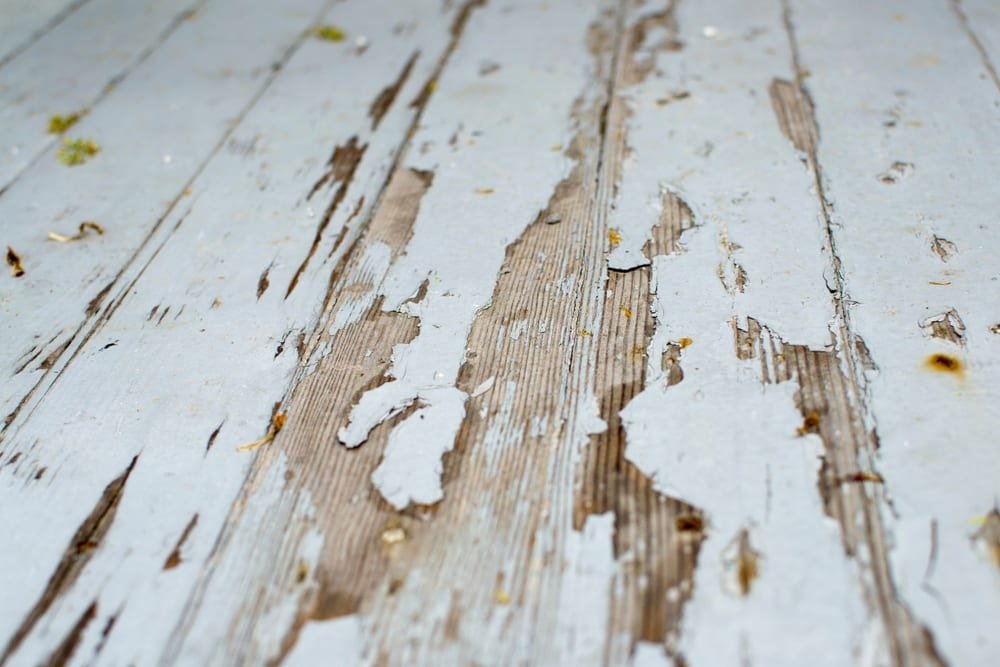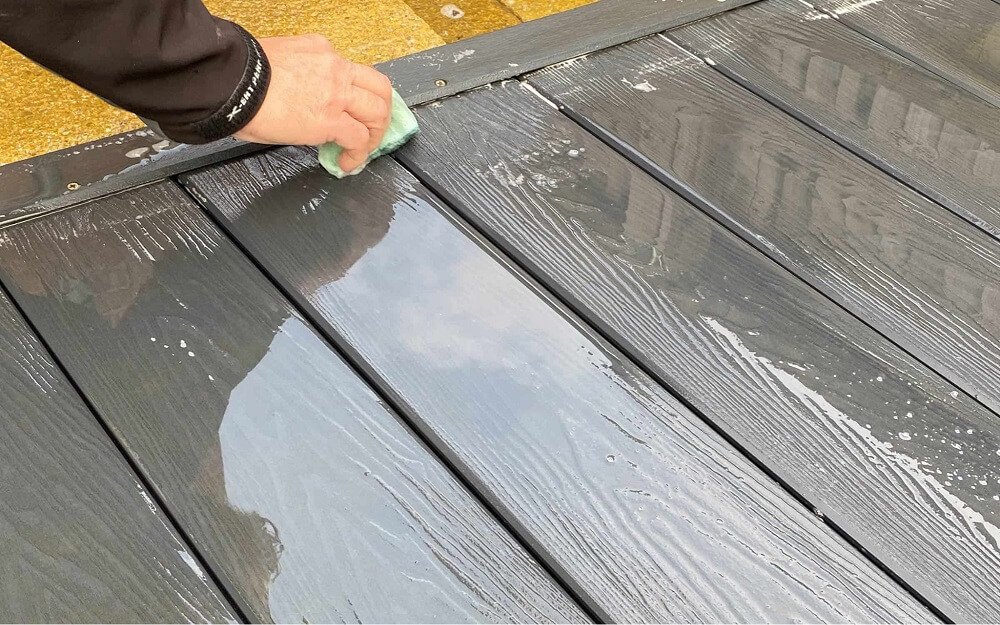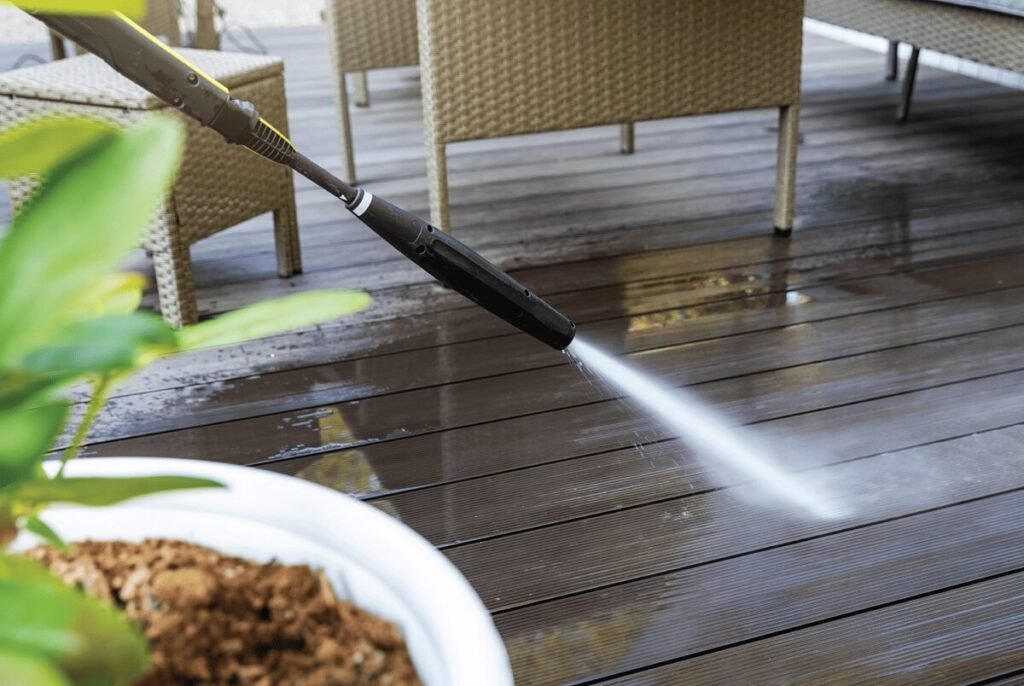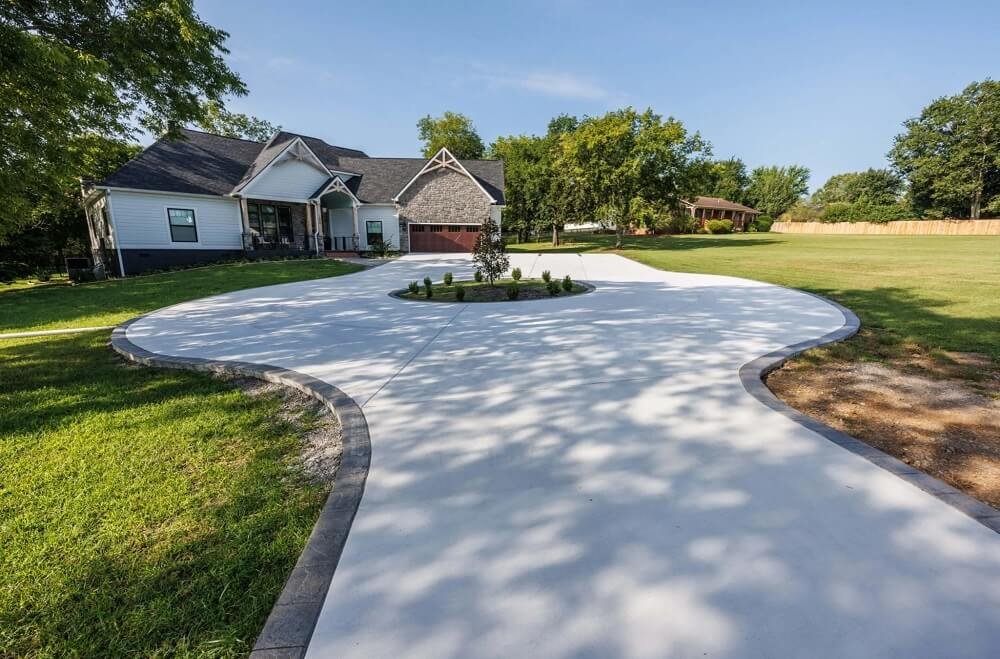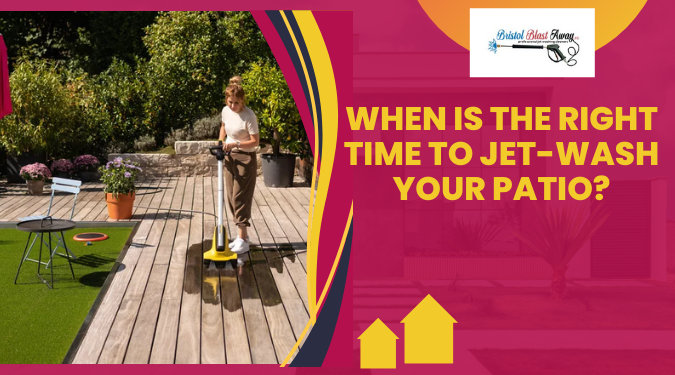We treat every decking as if it were our own, safe, thorough, and built to last.
A sparkling clean deck doesn’t have to depend on a noisy machine. In fact, some of the most effective ways to refresh your decking are also the gentlest ones and they don’t involve a pressure washer at all.
Think of it as giving your outdoor space a spa day rather than blasting it with high-pressure water. With just a few everyday tools and a bit of care, you can lift away dirt, banish moss, and restore that inviting look underfoot.
In this article, we’ll show you how to clean your decking the smart way, safe for the boards, easy on your budget, and surprisingly satisfying to do.
Why Avoid a Pressure Washer?
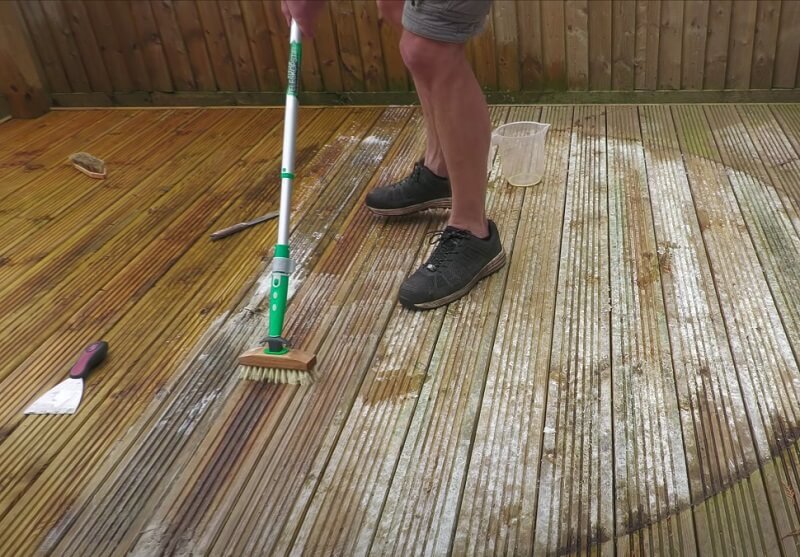
While pressure washers may seem like the fastest way to clean decking, they often do more harm than good. The intense water jet can damage delicate wood fibres and strip away protective coatings, leaving your boards vulnerable to rot and weathering.
If your decking is painted or stained, a single blast can unintentionally peel away the finish, undoing all the effort you’ve put into maintaining it.
Beyond that, pressure washers use far more water and energy than necessary, not exactly the eco-friendly choice. And the truth is, for regular upkeep, you simply don’t need one.
Gentle cleaning methods can keep your decking fresh, safe, and long-lasting, without the risks or the extra costs.
Is Manual Deck Cleaning Effective?
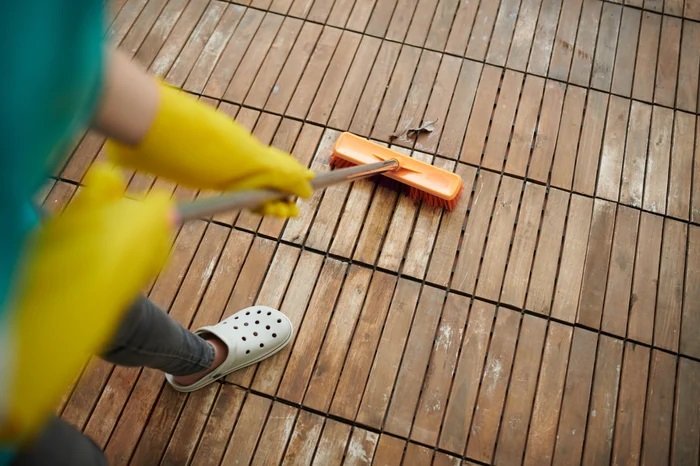
Manual cleaning may take a little more time, but it remains one of the safest and most dependable ways to care for your decking. By using simple tools and a careful approach, you can keep the boards in good condition, avoid unnecessary risks and still achieve a fresh, welcoming look without relying on heavy equipment.
Benefits of Cleaning Without a Pressure Washer
Safer for older or softer wood. Gentle methods prevent splintering and protect fragile boards.
More control over delicate areas. You decide where to scrub harder and where to be extra careful.
Cheaper and eco-friendlier. No expensive tools, less water waste, and a smaller energy footprint.
What to Expect in Terms of Effort
Takes longer and requires more scrubbing. Be prepared for some elbow grease, especially on larger decks.
Works best for maintenance or light dirt. Regular cleaning prevents heavy build-up.
Deep stains may still need professional help. Sometimes, expert cleaning is the safest long-term solution.
What You’ll Need to Get Started
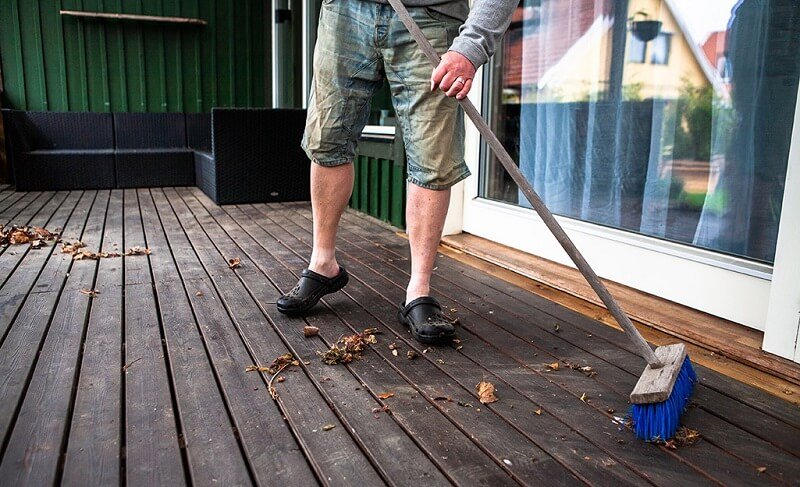
Before you roll up your sleeves, make sure you’ve got the right tools at hand. The good news? You don’t need expensive gear or heavy machinery, just a few simple items that make the job easier, safer, and a lot more effective:
– Stiff-bristle outdoor brush or deck scrubber, your main weapon for lifting dirt and moss.
– Bucket and mop, perfect for rinsing and applying cleaning solutions.
– Garden hose with spray nozzle, gentle but effective for washing everything down.
– Gloves and non-slip shoes, protect your hands and keep your footing steady.
– Optional: knee pads for comfort, especially handy if you’ve got a larger deck to tackle.
With these essentials ready, you’ll be fully equipped to give your decking a thorough clean without ever reaching for a pressure washer.
Step-by-Step Guide to Cleaning Decking Without a Pressure Washer
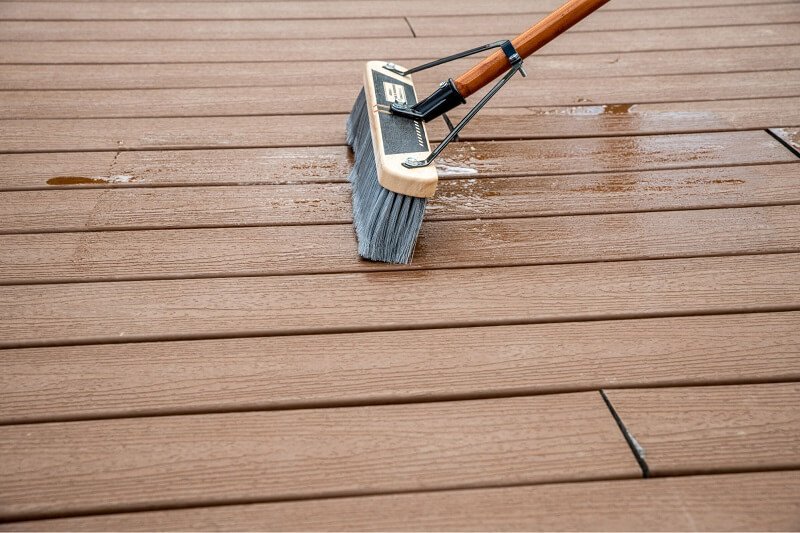
Cleaning your deck by hand may take a little more effort, but it’s worth it. By working methodically through these steps, you’ll protect your boards, save water and enjoy a safer, fresher outdoor space.
Step 1 – Clear and prepare
Begin by removing anything that might get in the way: chairs, tables, plant pots, even outdoor rugs. This ensures every part of your decking is accessible and prevents hidden dirt from being missed. It’s also the perfect chance to check for loose boards, nails, or screws that may need a quick fix before cleaning begins.
Take a moment to sweep away larger debris like branches or stones. Starting with a clear surface makes the cleaning process smoother and protects your tools from unnecessary wear.
Step 2 – Sweep thoroughly
A stiff-bristle broom is your best friend here. Work across the entire deck, pushing dust, leaves, and grit out of the gaps between the boards. Don’t rush, this step is more important than it looks. By removing loose dirt first, you’ll prevent it from turning into muddy streaks once water and cleaning solution are applied.
If you’ve got stubborn patches of moss or algae, spend a little extra time on them now. The more you clear at this stage, the easier the scrubbing will be later.
Step 3 – Apply natural cleaner
Choose a gentle but effective cleaner, either a commercial decking solution or a DIY mix such as warm water with a splash of vinegar or baking soda. Pour or mop it evenly over the boards, making sure not to flood the gaps.
This isn’t just about washing the surface, it’s about loosening dirt, softening stains, and tackling organic growth before scrubbing begins. Let the cleaner sit for a few minutes to do its job, but don’t leave it to dry completely.
Step 4 – Scrub the decking
Now comes the hard work and the most satisfying part. With your stiff brush, scrub along the natural grain of the wood. This protects the fibres and helps lift dirt out rather than just spreading it around.
Focus on problem areas: dark patches, slippery spots, or stains left by planters and furniture. If you’re cleaning composite decking, apply steady pressure without overdoing it, you want to clean the surface, not scratch it.
Step 5 – Rinse with garden hose
Once you’ve scrubbed the entire area, rinse it thoroughly with a garden hose fitted with a spray nozzle. The goal is to wash away every trace of dirt and cleaning solution, leaving the surface fresh and safe to walk on.
Avoid using too much pressure, a steady spray is all you need. Take your time to direct water into the gaps between boards, where dirt and cleaner often hide.
Step 6 – Allow to dry fully
The final step is patience. Let the decking dry naturally in the sun, which helps prevent mould or damp patches from forming. Depending on the weather, this may take a few hours, so resist the temptation to put furniture back too soon.
Once the boards are completely dry, your deck is ready to enjoy again, cleaner, safer, and refreshed without the risks of a pressure washer.
Natural Homemade Deck Cleaners
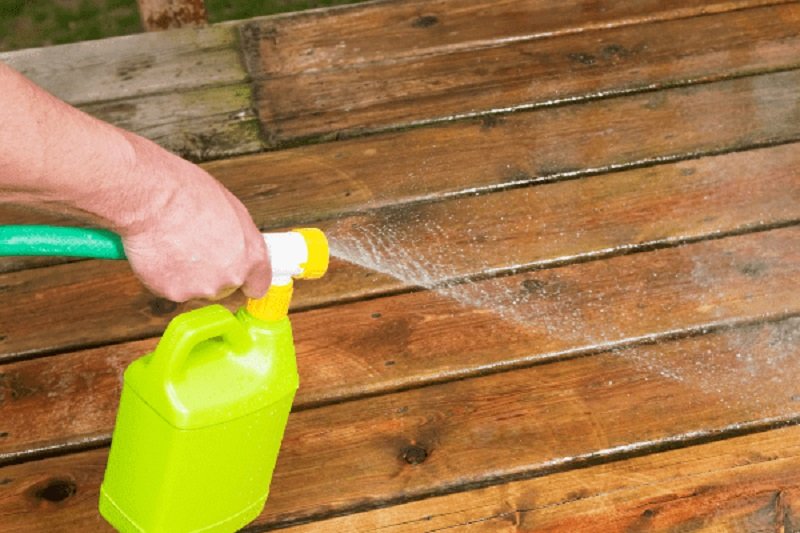
You don’t need harsh chemicals to keep your decking looking its best. In fact, some of the most effective cleaners are probably already sitting in your kitchen cupboard.
These natural solutions are affordable, eco-friendly, and gentle enough to protect your decking while still tackling dirt, algae, and everyday grime. Here are a few tried-and-tested options worth trying:
Vinegar & Water Mix
Combine 1 part white vinegar with 1 part warm water for a simple but powerful cleaning solution. Vinegar is especially effective against algae and mould, helping to restore a clean, safe surface without damaging the wood. For stubborn patches, let the mixture sit for a few minutes before scrubbing.
Baking Soda Paste
For spot cleaning, mix baking soda with a little water to create a paste. Apply it directly to stains and scrub gently. Baking soda is non-toxic, safe for pets and children, and works wonders on small problem areas without affecting the rest of the deck.
Soda Crystals Solution
If you’re dealing with greasy marks or built-up grime, dissolve soda crystals in hot water and apply across the affected areas. This solution cuts through oily residues with ease, leaving the boards clean and refreshed without the need for heavy-duty chemicals.
Mild Washing-Up Liquid
Sometimes the simplest option is the best. A few drops of mild washing-up liquid in a bucket of warm water make an excellent all-purpose cleaner for everyday dirt and dust. It’s gentle, easy to rinse away, and safe for regular use as part of your deck maintenance routine.
Time & Effort: What to Expect Without a Pressure Washer
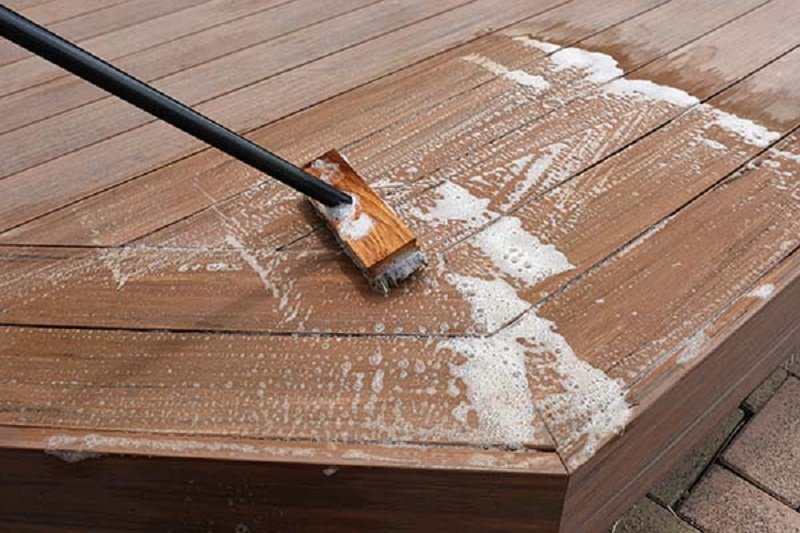
Cleaning your decking by hand doesn’t have to take all day, but it does require a little patience and elbow grease. On average, you can expect to spend 30–60 minutes scrubbing a standard-sized deck, depending on how much dirt has built up.
For smaller decking areas, a quick 20-minute maintenance clean is often all that’s needed to sweep away dust, rinse the boards, and give the surface a fresh look.
If you’re dealing with heavier staining, moss, or ground-in grime, be prepared for 2-3 rounds of scrubbing. While it takes extra effort, the results are worth it, your decking will look brighter, safer, and far more inviting without the risks of pressure-washing.
Preventing Algae & Stains After Cleaning
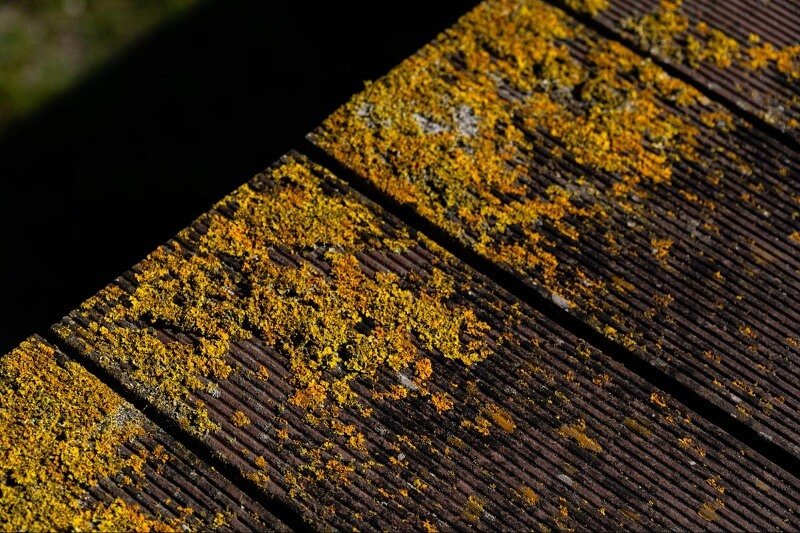
A spotless deck is only half the battle, keeping it that way is where the real value lies. With a few simple habits, you can protect your decking from algae, stains, and unnecessary wear, making your hard work last much longer.
Sweep weekly to remove dirt and leaves. Regular sweeping stops moisture and organic matter from building up, which is what algae and mould feed on.
Keep pots raised to prevent water marks. Use pot stands or saucers to stop damp circles and staining where water collects underneath containers.
Apply decking oil or sealant once a year. A protective coat not only enhances the look of your boards but also acts as a barrier against water, UV rays, and everyday dirt.
By staying consistent with these simple steps, your decking will stay cleaner for longer, saving you time and effort in the long run.
When Should You Call in the Professionals?
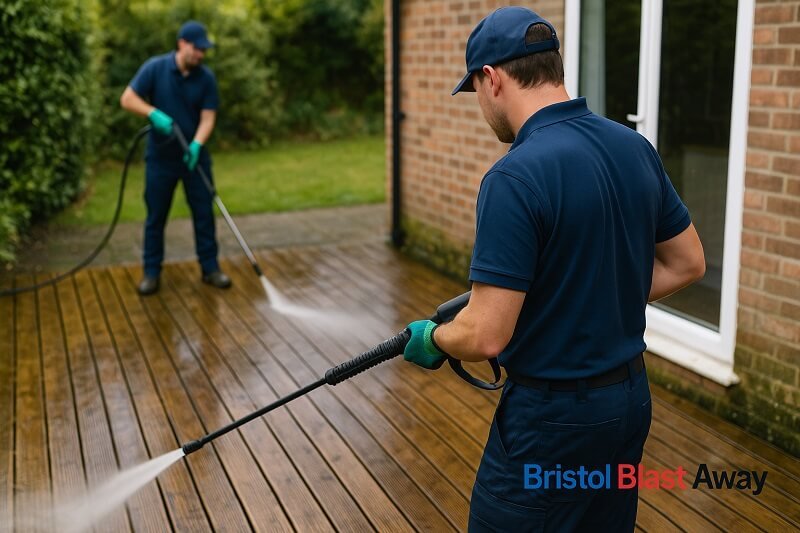
Most decking can be kept clean with regular DIY care, but there are situations where professional help makes all the difference.
Stubborn problems like deep oil marks, old paint spills, or rust stains often need specialist products and techniques to lift safely without harming the boards.
The same goes for very large decking areas or those that have been neglected for years. Tackling these on your own can be time-consuming and exhausting, while a professional team can restore them quickly and effectively.
Safety is another important factor. If mould, algae, or slippery surfaces are making your deck hazardous, expert cleaners have the right tools and treatments to make it safe again, protecting not just your decking, but everyone who uses it.
Why Choose Bristol Blast Away?
We know it’s not always easy to trust someone with your home. Choosing the right team can feel overwhelming and that’s exactly why we’re here to make things simple.
At Bristol Blast Away, we’ve built our reputation on reliable service, professional results, and a genuine passion for bringing outdoor spaces back to life.
When you call us, you’re not just getting powerful cleaning, you’re getting a friendly, experienced team that treats your decking as if it were our own.
We focus on safe methods, lasting results and clear communication every step of the way. No hidden surprises, just a cleaner, safer deck you can enjoy again.
FAQs About Deck Cleaning Without a Pressure Washer
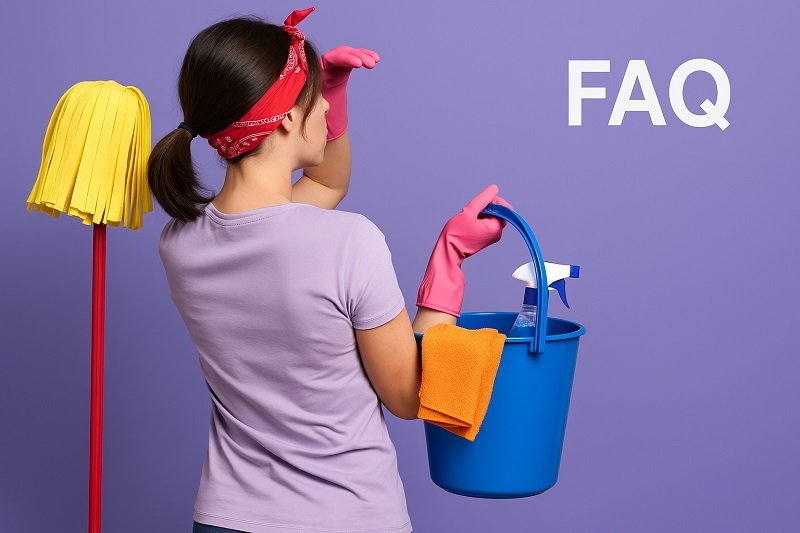
Our team has gathered some of the most common questions we hear about deck cleaning without a pressure washer. Here are the answers to help you keep your decking safe, clean and long-lasting. And if you’d like more personalised advice, feel free to get in touch with us anytime.
1. Can I use bleach instead of vinegar?
Bleach is harsh and can damage both the wood and surrounding plants. Vinegar is a much safer option that still works effectively against algae and mould.
2. How often should I scrub decking manually?
For most outdoor spaces, a thorough scrub once or twice a year is enough, with lighter maintenance cleans every few months to prevent build-up.
3. What’s the best eco-friendly solution?
A simple mix of white vinegar and warm water is one of the most eco-friendly and effective options. Baking soda paste is also great for tackling stubborn stains.
4. Will scrubbing damage my decking boards?
Not if you use the right tools. A stiff-bristle brush used along the grain of the wood cleans effectively without harming the surface.
5. How do I keep algae from coming back?
Regular sweeping, keeping pots raised, and applying a protective decking oil or sealant once a year will greatly reduce the chance of algae returning.

